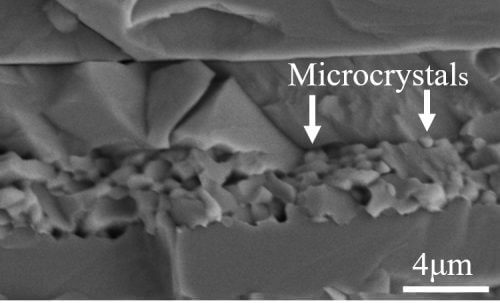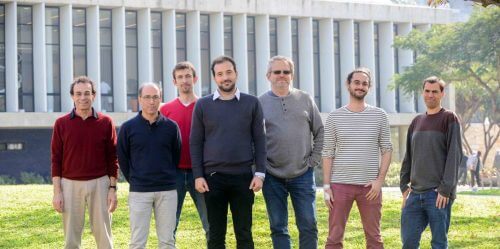
Smart materials can move humanity into an era of renewable energy, and hence into a self-sustaining world. And what is smarter than materials that repair themselves? Weizmann Institute scientists have shown that the so-called substances The halide perovskites - the great promise of the solar energy field - they know, no less, how to heal themselves. The findings, which were published recently in the scientific journal Advanced materials, may not only promote the commercial use of halide perovskites, but also help identify additional materials that heal themselves, and may be used to manufacture various electronic devices.
Scientists have so far struggled to understand the extraordinary performance of halide perovskites - soft semiconductors that can be easily produced at room temperature by mixing and drying two salt solutions. The production process is so simple and fast that it is also expected to give rise to many defects. However, the hallide perovskites convert solar energy into electricity so efficiently, it's almost as if they have no defects. One of the possible explanations for the phenomenon is that the material knows how to repair the defects by itself.
Self-healing in a group of solar materials from the previous generation was discovered about two decades ago by Prof. David Kahn From the Department of Materials and Surfaces together with Lior Kronik, then a post-doctoral researcher, and now a professor and head of the same department, and other colleagues. The discovery led to the hypothesis that the property also exists in other materials. "When we tried to explain the high efficiency of the halide perovskites, we returned to this hypothesis and assumed that while the material was created and afterwards, it continues to repair the defects within it," explains Prof. Kahn.
>> Accelerated documentation showing that a defect (dark spot) inside a halide perovskite nanocrystal disappeared after the material healed itself
After that, the scientists illuminated the crystal - which emits light after absorbing light - and tracked the defects created in it with the help of a particularly sensitive optical detector. The crystal emitted light as is typical of this material, except in the damaged area which remained darker. But after a while - several minutes to several hours - the dark spot disappeared, and the entire crystal returned to light. The scientists examined the crystal under an electron microscope and discovered that its structure was identical to its original state.
"It is possible that solar cells made of hallide perovskites will heal themselves when it gets dark, and thus repair the damage done to them during the day"

Surprisingly, even when the defects were created using blue light with an intensity hundreds of times greater than that of sunlight, and an entire area within the crystal was destroyed, the material still healed itself - and this time with the help of creating a new layer of micro-crystals in place of the single-crystal area that was destroyed. The scientists assumed that the laser beams caused some of the damaged material to break down into its components, which reacted with each other to form the original material. That is, it occurred in the area of recycling, or self-healing. Laboratory chemical experiments supported this explanation.
"Crystals of the hallide perovskites are formed through relatively weak atomic bonds, so it is easy to break them down, but it is also relatively easy to restore them," explains Prof. Kahn.

Self-healing may be particularly beneficial in solar cells, which gradually wear out with use. "It is possible that solar cells made of hallide perovskites will heal themselves when it gets dark, and thus repair the damage caused to them during the day," suggests Prof. Kahn. The research findings may help make these promising materials more durable for the production of solar cells or essential components in optical and electronic devices. An equally important thing: the findings may promote the search for additional materials that heal themselves for the production of sustainable energy and for other uses.
The research group also included Prof. Michael Albaum from the Department of Chemical and Biological Physics and Prof. Dan OronFrom the Department of Physics of Complex Systems, the research students Yevgeny Rakita and Ron Tana and the faculty scientist Dr. Vyacheslav Kalchenko, as well as scientists from the University of Milan in Italy: Lorenz Carmonzi and Prof. Marco Potenza.
#Science_Numbers
A solar cell made of halide perovskites produces about 1017 Electrons per second per square centimeter directed to the sun (20 milliamperes). For comparison, an iPhone needs a 50 times stronger electric current (1 ampere) during charging.
See more on the subject on the science website:
